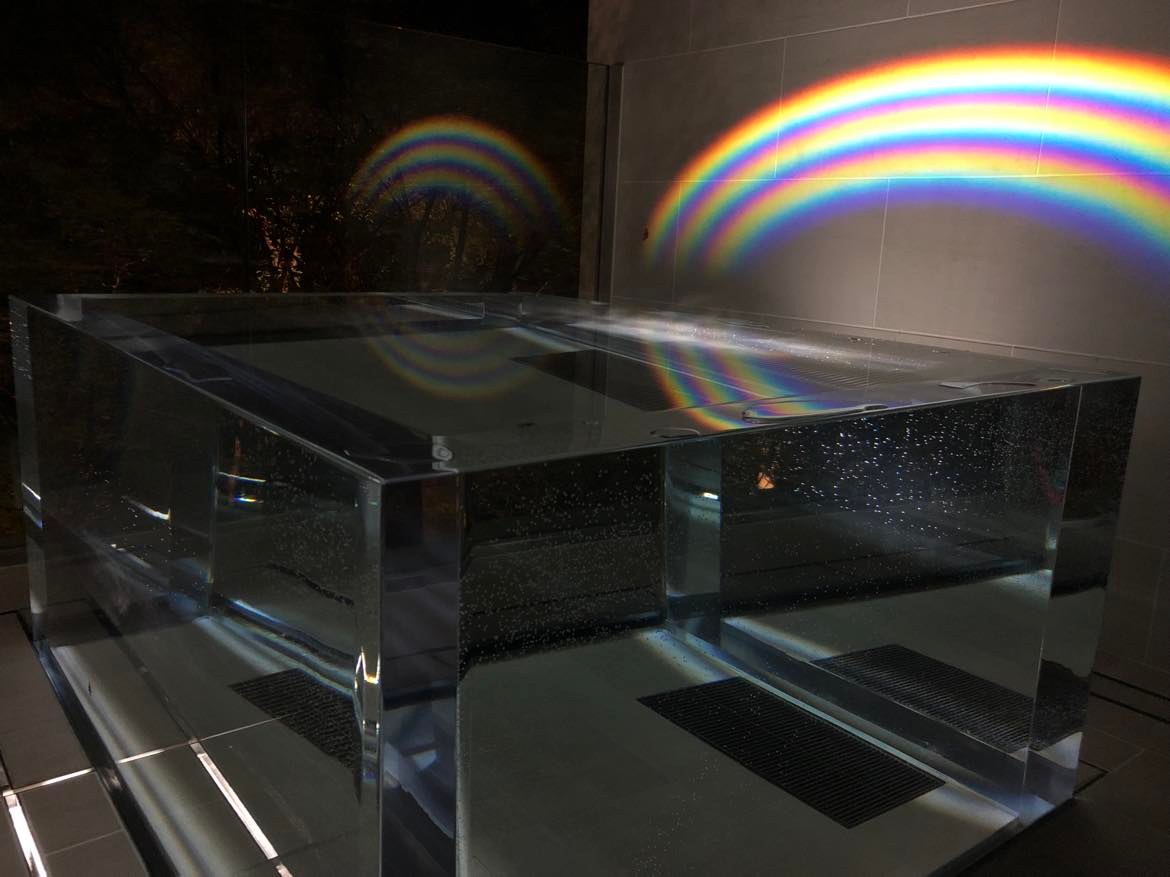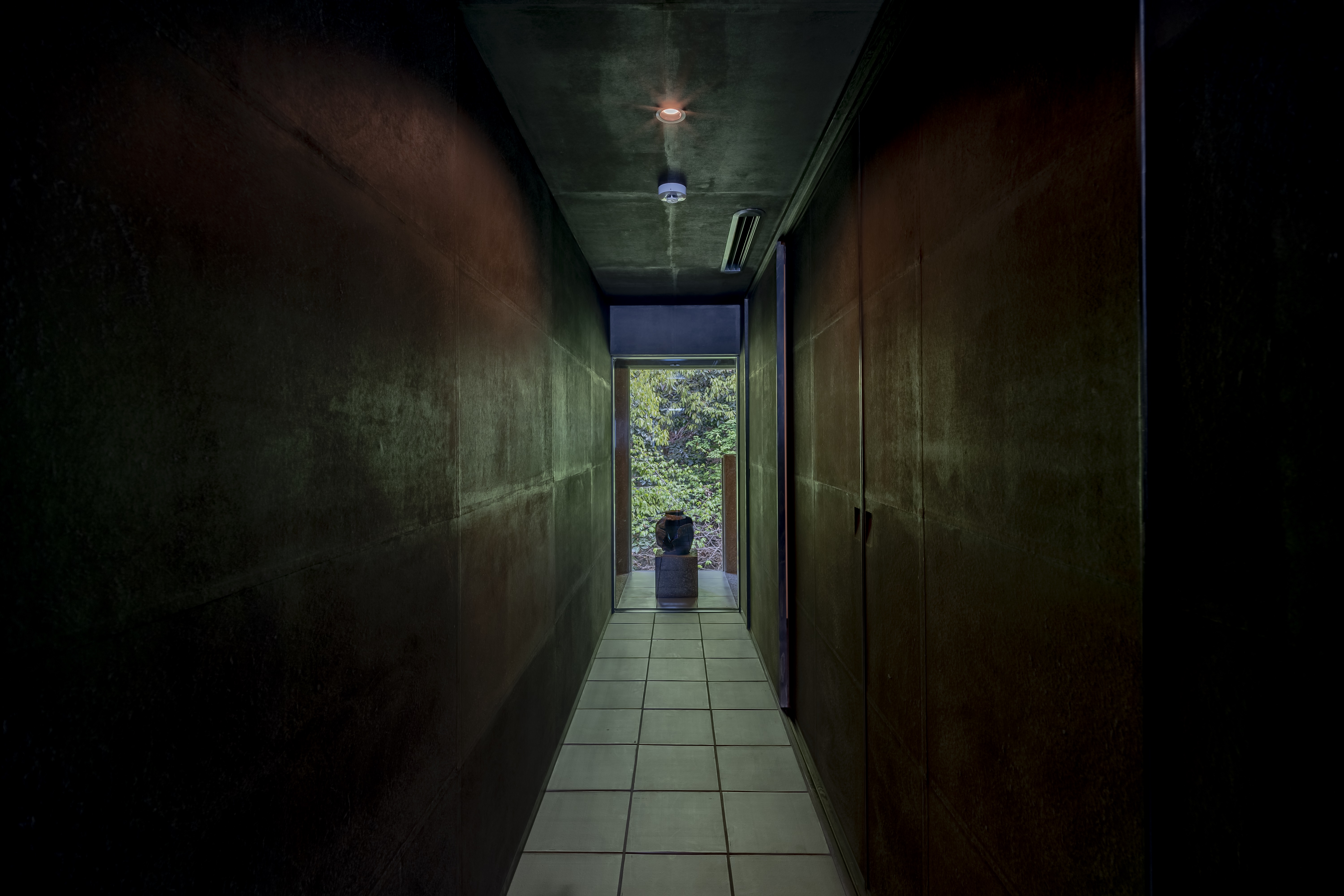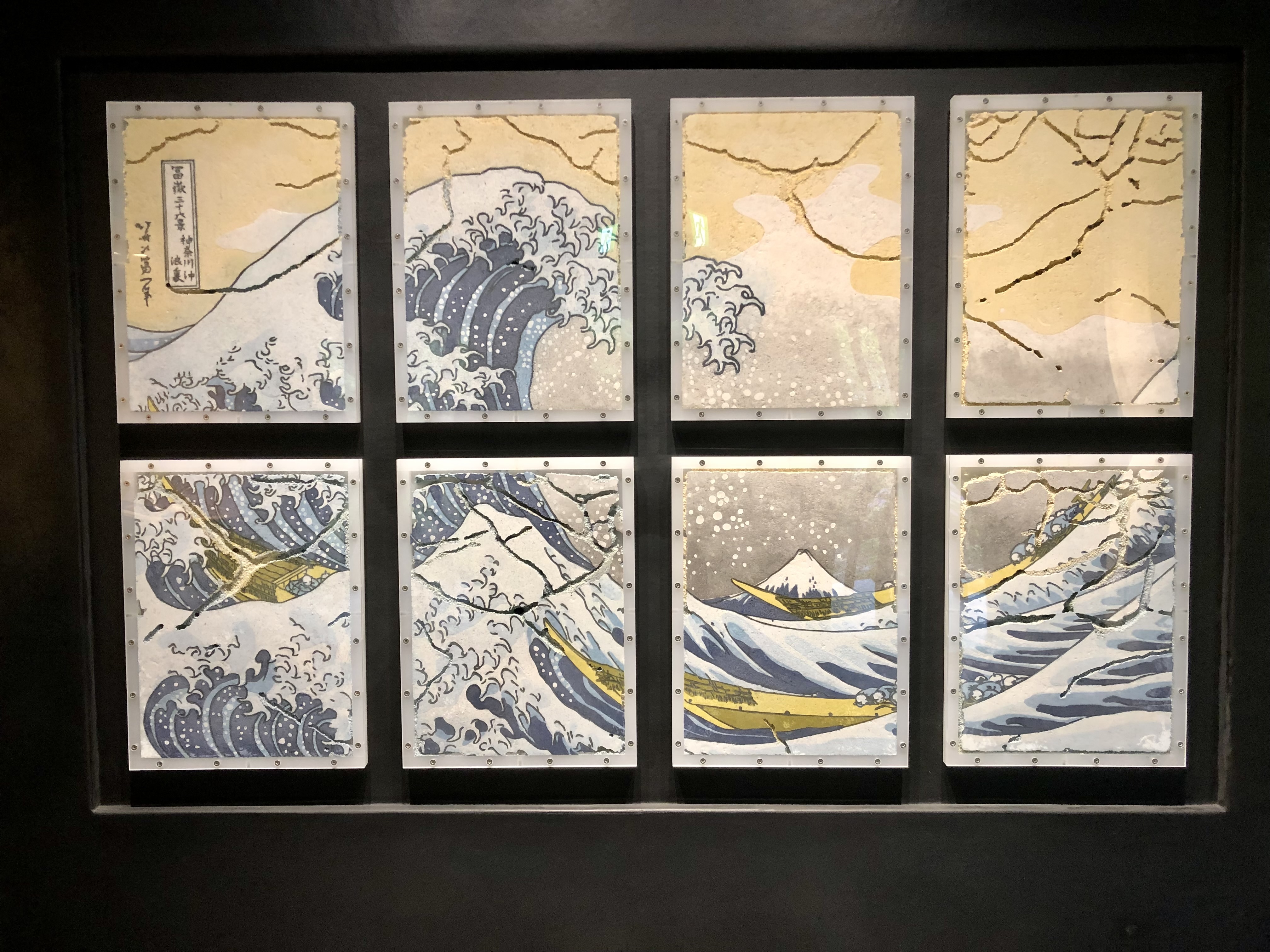A Kyoto Inn Lets Guests Lodge in an Artistic Vision
Conceptual drawing for the "Kohoo" guest room

Last year, Tokyo Art Beat wrote about Yukinori Yanagi's role in renovating Sumiya Kiho-an, a 67-year-old ryokan in an idyllically rural part of Kyoto Prefecture. The contemporary artist unveiled further collaborations this spring in the form of "Kohoo," a 140 square-meter guest room that is a work of art in its own right. The space is filled with site-specific pieces expressing Yanagi's thoughts about Japan as a modern nation, a theme he has continually explored. Staying in the suite is like booking a night in the artist's imagination.
Named after a Zen term meaning “the power to call the wind," Kohoo intends to "bring a new breeze that fuses traditional culture and Japanese art.” It was created by converting three rooms into a single unit accommodating two to five people. Artistically, it represents contrasting notions such as "heaven and earth" and "life and death," ideas illustrated as opposite directional poles in a conceptual sketch. Kohoo also echoes themes from many of Yanagi's previous works, including his site-specific installations and ambitious architectural projects.

Kohoo features three distinct but connected chambers called "Heaven Room," "Chrysanthemum Room," and "Earth Room." The first space is a Western-style bedroom and bath. Behind twin beds, a wall Yanagi created with the washi paper craftsman Wataru Hatano is decorated in gold foil and embossments forming the petals of chrysanthemums – a symbol of Japan and its Imperial throne. The work references "The Chrysanthemum and the Sword: Patterns of Japanese Culture," a 1946 anthropological study of Japan written for the U.S. Office of War Information. Yanagi also employed this motif in works such as "The Chrysanthemum Carpet" (1994). Here again, scattered petals are surrounded by words meaning "he loves me, he loves me not." While this time in Japanese, the text in the original was written in languages of countries occupied by Japan in the 1930s and 1940s – a rebuke of postwar Japan's historical amnesia.


Guests are welcome to soak in the en-suite Heaven Bath, from which rainbows emanate as light hits the clear acrylic tub filled with hot-spring water.

Chrysanthemum Room, a Japanese-style lounging and sleeping space with a tatami floor, is situated at the center of Kohoo. The 10th-generation obi belt artisan Genbei Kondaya plans to contribute further designs for the space inspired by chrysanthemum paintings of the 18th century artist Jakuchu Ito.

Next to Chrysanthemum Room is a second basin, Earth Bath. Created with the Kyoto plaster craftsman Akira Kusumi, the tub features a stone-like appearance that evokes the vital energy of the earth. Kyoto ceramicist Naoto Ishii contributed the green Oribe-glazed tiles on the wall.

The Earth Room serves as a dining room and meeting space. An orange-hued back wall, also the work of Mr. Kusumi, is an abstract representation of a sunset.

Yanagi's site-specific work "Sword" hangs on an adjacent Earth Room wall. Also an allusion to "The Chrysanthemum and the Sword," this piece is an actual military weapon from WWII. Paradoxically inscribed with text from the war-renouncing Article 9 of Japan's constitution, "Sword" is especially poignant now as the Japanese Diet moves closer to rewriting the pacifist document.
To the left of "Sword," Naoto Ishii's "Cracked Pot" is visible through a glass door leading into the Earth Bath space. A flame burns within this heat-warped, memorial-like vessel fired in a kiln at 1200°C.

An iron-walled passageway, similar to the one leading from the inn's Art Gallery Hakutai, connects the three chambers of Kohoo. This U-shaped hall also resembles that of Inujima Seirensho Art Museum, a key site in the Setouchi International Art Triennale. There, as a meditation on Japan's industrial legacy, Yanagi converted the ruins of a copper refinery into an art installation. Mirrors at the ends of the corridors create a disorienting, maze-like space connoting Icarus' Labyrinth from Greek mythology.

The artist has long imagined Icarus as a metaphor for Japan in the modern era, a time of rapid development but also disastrous consequences. Words written on the hallway mirrors, both here and at Seirensho, come from a Yukio Mishima poem that reflects on the emperor's postwar demotion from a Sun God to an earthly mortal. The section in the photo above reads: "Do I then belong, after all, to the earth?" It is part of a longer text that also includes the line:
Those who cross the heavens
have their wings broken
and their eternal glory scorned
by termites.

The Kohoo suite is not the only space at Sumiya Kiho-an to encounter artworks by Yanagi and artisans from the region. Drawings from Yanagi's "Wondering Position" series, for which he traced the meandering paths of live ants in red chalk, can be found in the hallway.

At the entrance, "Study for Japanese Art – Hokusai" has pride of place. This homage to "The Great Wave Off of Kanagawa" was created specifically for Sumiya Kiho-an and unveiled last year. Along with similar pieces at the bar referencing works by Andy Warhol, this installation features ant tunnels in colored sand. Yanagi recreated the iconic ukiyo-e in the style of his series "Ant Farm Project" because the Hokusai masterpiece depicts seafaring boats, a motif he believed would resonate with inn guests on their own journeys.
The ship theme continues with recent works in the "Pacific Series." "Nagato 70・Ⅰ-Ⅱ," a 1/70th-scale reproduction of a Japanese battleship sunk in the Bikini Atoll in a U.S. hydrogen bomb experiment, occupies the center of Art Gallery Hakutai. On the back wall is an underwater photograph of the wreckage taken by Yanagi himself while scuba diving. A 2019 exhibition at Blum & Poe in Tokyo presented a similar sculpture of the Japanese battleship Akitsushima. Once again confronting postwar history, Yanagi views these drowned ruins as a kind of "memorial" that, by nature of a remote and largely forgotten existence, is less susceptible to being propagandized than most.

In both its shared and private spaces, Sumiya Kiho-an offers the chance to experience the work of a great contemporary artist in a deeper, more intimate way than is possible at a museum. It is Yanagi's professed hope that his creations here will inspire guests "to dream about the story of the rebirth of modern Japan – Icarus crashing down with his wings burned off after coming too close to the heavens."
Sumiya Kiho-an
English website: https://www.sumiya.ne.jp/en/
Art Room "Kohoo"
Price (per person): From ¥110,000 for one night with dinner and breakfast; Special Opening Rate from ¥77,000
Reservations (Japanese): https://reserve.489ban.net/client/sumiya/0/detail/509683
Art Gallery Hakutai
Website: https://hakutai.sumiya.ne.jp/
Design: Yanagi + Art Base, Yagi K. Design Lab (Hiroshima University Graduate School of Humanities and Social Sciences, Design Laboratory)



